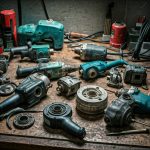A well-constructed retaining wall can transform your outdoor space, adding both beauty and function. In wall construction, landscaping walls play a key role in enhancing your yard’s aesthetic. A well-built retaining wall can turn your outdoor area into a perfect spot for relaxation and entertainment.
Retaining walls are essential in landscaping, adding depth and dimension to your yard. They help create a unique and functional space that reflects your personal style. Whether you dream of a garden, patio, or outdoor seating area, a retaining wall can bring your vision to life. Ensuring proper construction is crucial for the wall’s structural integrity. With the right planning and materials, you can craft a space that will stand the test of time.
When selecting materials for landscaping walls, you have many options, including natural stone, concrete block, and timber. Each material offers unique benefits and drawbacks, making the right choice dependent on your specific needs and preferences. By carefully considering your options and selecting the ideal material, you can create a retaining wall that not only looks stunning but also serves a functional purpose.
Key Takeaways
- Retaining walls can add beauty and function to your outdoor space
- Proper wall construction is essential for structural integrity
- Landscaping walls can help create a sense of depth and dimension in your yard
- Choosing the right material is crucial for a successful project
- A well-planned retaining wall can enhance the overall aesthetic of your yard
- Retaining walls can help create a unique and functional outdoor space
Understanding Retaining Walls and Their Purpose
Retaining walls are essential in landscape design, acting as a slope management tool to stop soil erosion and ensure terrain stability. Garden walls, in particular, offer both aesthetic and practical benefits. They beautify landscapes while solving uneven terrain problems.
There are various types of retaining walls, each with its own advantages and uses. Some common types include:
- Gravity walls, which rely on their weight to resist soil pressure
- Cantilever walls, which use a cantilever design to provide additional support
- Piling walls, which use deep foundations to provide stability
Installing a retaining wall offers many benefits, such as better slope management, increased property value, and enhanced visual appeal. Garden walls can also divide a landscape into different areas, like gardens or patios. They can be designed to include features like seating, water features, and plantings.
Retaining walls are commonly used in landscape design for several reasons:
- Stabilizing slopes and preventing soil erosion
- Creating separate areas within a landscape
- Enhancing the visual appeal of a property
Understanding the different types of retaining walls and their benefits helps homeowners and landscape designers make informed decisions. This leads to creating more functional and beautiful outdoor spaces.
| Retaining Wall Type | Benefits | Applications |
|---|---|---|
| Gravity Walls | Cost-effective, easy to install | Slope stabilization, garden walls |
| Cantilever Walls | Provides additional support, flexible design | High-traffic areas, commercial properties |
| Piling Walls | Deep foundations, high stability | Coastal areas, high-water tables |
Essential Planning and Site Preparation
Building a retaining wall requires careful planning and site preparation for stability and longevity. You must assess the terrain, select the right wall materials, and design the wall for structural support. A well-designed wall can prevent soil erosion, create a flat area for gardening, and enhance your property’s look.
First, evaluate the site’s conditions, including soil type, slope, and drainage. This helps choose the best wall materials and structural support for the wall’s stability against gravity and water pressure. Common materials include concrete blocks, natural stone, and timber.
- Assess the soil type and stability to determine the required structural support
- Choose the right wall materials based on the site’s conditions and your budget
- Plan the wall’s design to ensure it can withstand the forces of gravity and water pressure
- Consider the drainage system to prevent water accumulation and erosion
By meticulously planning and preparing your site, you can achieve a successful retaining wall project. It will provide the necessary structural support and increase your property’s value. Select the right wall materials and design the wall to meet the site’s conditions. If unsure, consult a professional.
| Wall Materials | Structural Support | Drainage System |
|---|---|---|
| Concrete blocks | Reinforced with steel | French drain |
| Natural stone | Gravity-based | Surface drainage |
| Timber | Reinforced with wood | Permeable pavers |
Choosing the Right Materials for Your Project
When building a retaining wall, material selection is key. It affects both looks and function. The right materials help control terrain, preventing erosion and landslides. We’ll look at the options for your project.
Material choice depends on several factors. These include wall height, soil type, and desired look. Natural stone is favored for its durability and landscape fit. Concrete blocks offer a cost-effective, versatile alternative.
Key considerations for material selection include:
- Durability and weather resistance
- Aesthetics and landscape fit
- Cost and budget
- Effectiveness in terrain control
By weighing these factors and choosing wisely, you can build a wall that looks good and works well. It will control terrain effectively and prevent erosion.
Beyond natural stone and concrete blocks, timber and other materials are also viable. Each has its own benefits and drawbacks. Your choice should align with your project’s specific needs and your preferences.
| Material | Advantages | Disadvantages |
|---|---|---|
| Natural Stone | Durable, aesthetically pleasing | Expensive, heavy |
| Concrete Blocks | Affordable, versatile | Less durable than natural stone |
| Timber | Natural look, relatively inexpensive | Prone to rot and decay |
Required Tools and Safety Equipment
Before embarking on your DIY retaining wall project, it’s crucial to gather the necessary tools and safety equipment. This ensures a safe and successful construction process. You’ll need basic tools like trowels, levels, and shovels. Specialized equipment, such as plate compactors and cutting saws, is also required.
Investing in proper safety gear is equally important. This includes hard hats, safety glasses, and steel-toed boots. These items are essential for preventing injuries and protecting you from potential hazards on the job site.
Basic Tool Checklist
- Trowels
- Levels
- Shovels
- Plate compactors
- Cutting saws
Safety Gear Requirements
Along with basic tools, having the right safety equipment is vital. It minimizes risks and ensures a safe working environment. This includes:
- Hard hats
- Safety glasses
- Steel-toed boots
Specialty Equipment Considerations
For more complex projects, you may need to rent or purchase specialty equipment. This could include a backhoe or excavator for tasks like digging and material placement.
| Equipment | Purpose |
|---|---|
| Backhoe | Digging and excavation |
| Excavator | Material placement and removal |
Step-by-Step Construction Guide for Retaining Walls
Building a wall starts with a strong foundation for structural support. First, outline the area for your retaining wall, considering the yard’s slope and terrain. Then, dig a trench for the foundation, ensuring it’s level and compact.
Creating a retaining wall demands careful planning and execution. Here are essential steps to follow:
- Clear the site of debris or vegetation
- Set the foundation level with a level
- Construct the wall, layer by layer, using blocks, concrete, and backfill
As you build, ensure structural support by installing a drainage system and choosing the right materials for wall construction. This prevents erosion and extends your wall’s life.
By adhering to these steps and doing it correctly, you can build a stunning and practical retaining wall. It will beautify your outdoor area for many years.
Drainage Solutions and Water Management
Effective drainage and water management are key to a retaining wall’s longevity and stability. Proper slope management and terrain control prevent water damage. This ensures the wall remains a beautiful and functional landscape element.
To achieve this, installing proper drainage systems is essential. Managing surface water runoff and preventing water damage are also crucial. Here are some key considerations:
- Install a French drain or other drainage system to redirect water away from the wall
- Use permeable materials, such as gravel or porous pavers, to reduce surface water runoff
- Grade the terrain to direct water away from the wall and prevent water accumulation
By implementing these measures, your retaining wall will remain stable and functional. It will also protect the surrounding landscape from water damage.
Remember, proper terrain control and slope management are vital for a healthy and beautiful landscape. Effective drainage solutions ensure your outdoor space remains enjoyable for years.
| Drainage Solution | Benefits |
|---|---|
| French Drain | Redirects water away from the wall, prevents water damage |
| Permeable Materials | Reduces surface water runoff, promotes healthy drainage |
| Terrain Grading | Directs water away from the wall, prevents water accumulation |
Design Tips for Aesthetic Appeal
When designing landscaping walls and garden walls, balance is key. Functionality is essential, yet beauty should not be ignored. A well-crafted wall can transform an outdoor area, making it both stunning and welcoming. It’s important to consider the overall landscape design and how the wall will enhance it.
Choosing materials that harmonize with the landscape is crucial for visually appealing landscaping walls. Natural stone or brick can introduce elegance, matching the foliage around it. Adding plants or flowers to the design softens the wall, creating a natural look.
- Choose materials that complement the surrounding landscape
- Incorporate plants or flowers into the wall design
- Consider the color and texture of the wall in relation to the surrounding environment
A well-designed garden wall can also serve as a divider, enhancing the space’s intimacy. By adding seating or pathways, the wall becomes more than just a decoration. It becomes a functional part of the landscape. The secret to beautiful landscaping walls and garden walls lies in their integration with the landscape and their interaction with the environment.
Maintenance and Long-term Care
Regular maintenance is key to keeping the retaining wall stable and looking good over time. It’s important to use the right materials and ensure the wall has the necessary support. This means checking the wall often and fixing any problems right away.
A well-kept retaining wall boosts the landscape’s beauty and offers structural support to the soil around it. The type of materials used greatly affects the wall’s durability and stability. Choosing the right materials and ensuring proper support helps avoid issues like cracks, erosion, and collapse.
Seasonal Maintenance Schedule
Having a seasonal maintenance plan helps homeowners keep up with their retaining wall’s care. This includes:
- Inspecting the wall for damage or wear after heavy rain or extreme weather
- Trimming nearby plants to stop roots from damaging the wall’s support
- Checking the drainage system to ensure it works well and making changes if needed
Common Issues and Solutions
Problems with retaining walls include cracks, erosion, and collapse. These can be fixed by:
- Sealing cracks with a suitable sealant to stop water from getting in
- Adding more support to the wall if it’s needed
- Installing a good drainage system to prevent water from building up behind the wall
By sticking to a regular maintenance plan and fixing problems quickly, homeowners can keep their retaining wall stable and attractive for many years. This is achieved by using the right materials and ensuring the wall has enough support.
Conclusion: Creating Your Perfect Landscape Feature
Constructing a well-designed retaining wall can transform your outdoor space. It’s perfect for tackling uneven terrain, enhancing your yard’s look, or creating a functional and beautiful landscape. The key is understanding the principles of wall construction and landscaping walls.
This guide has equipped you with the knowledge and confidence to turn your yard into a paradise. A retaining wall is more than a practical solution. It’s a chance to express your creativity and design a space that mirrors your personal style and vision.
So, get ready to start your project. It may come with challenges, but with careful planning, attention to detail, and your unique touch, you’ll soon enjoy the beauty and functionality of your new retaining wall. Embrace the journey and let your outdoor dreams flourish.




